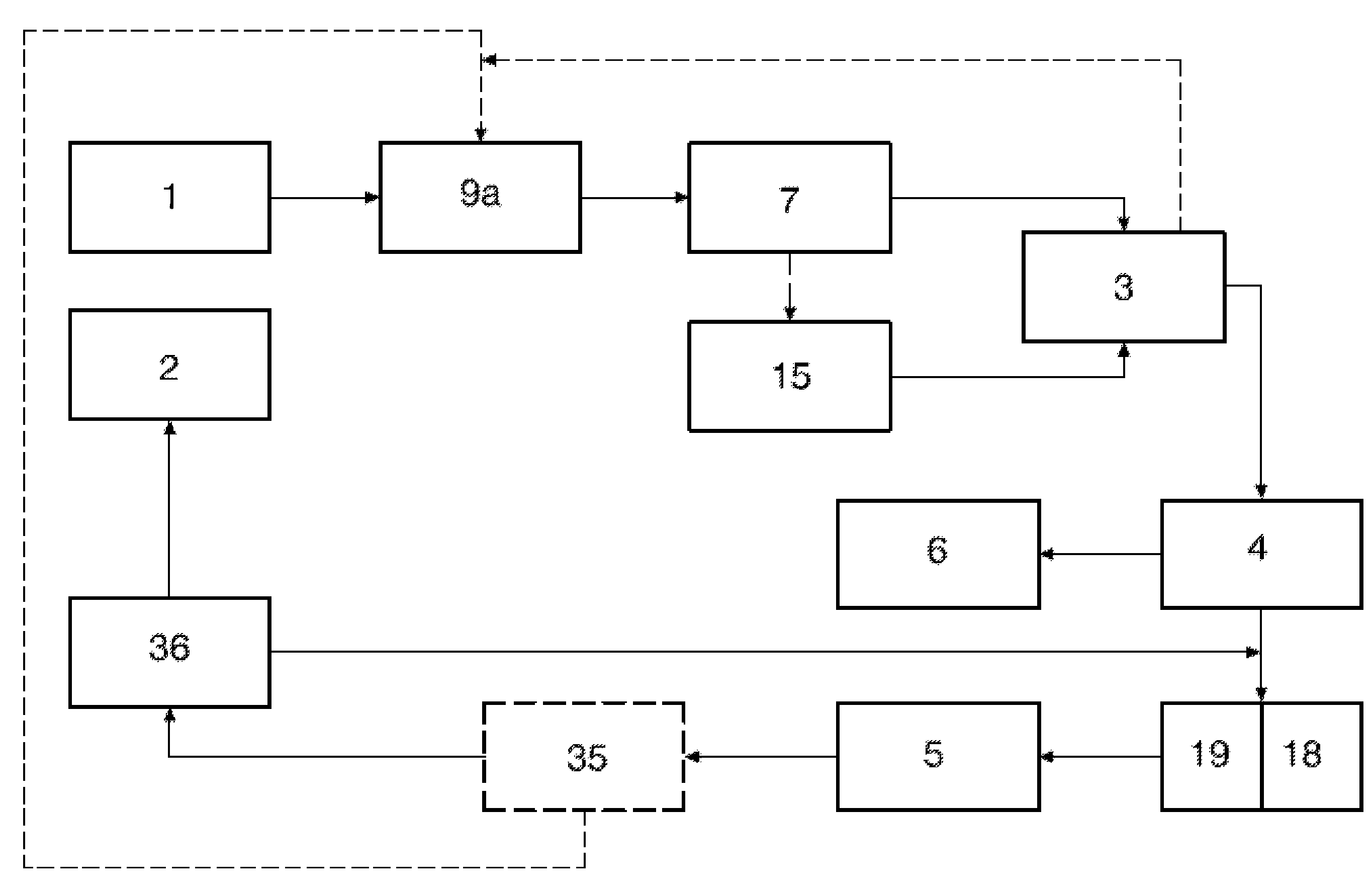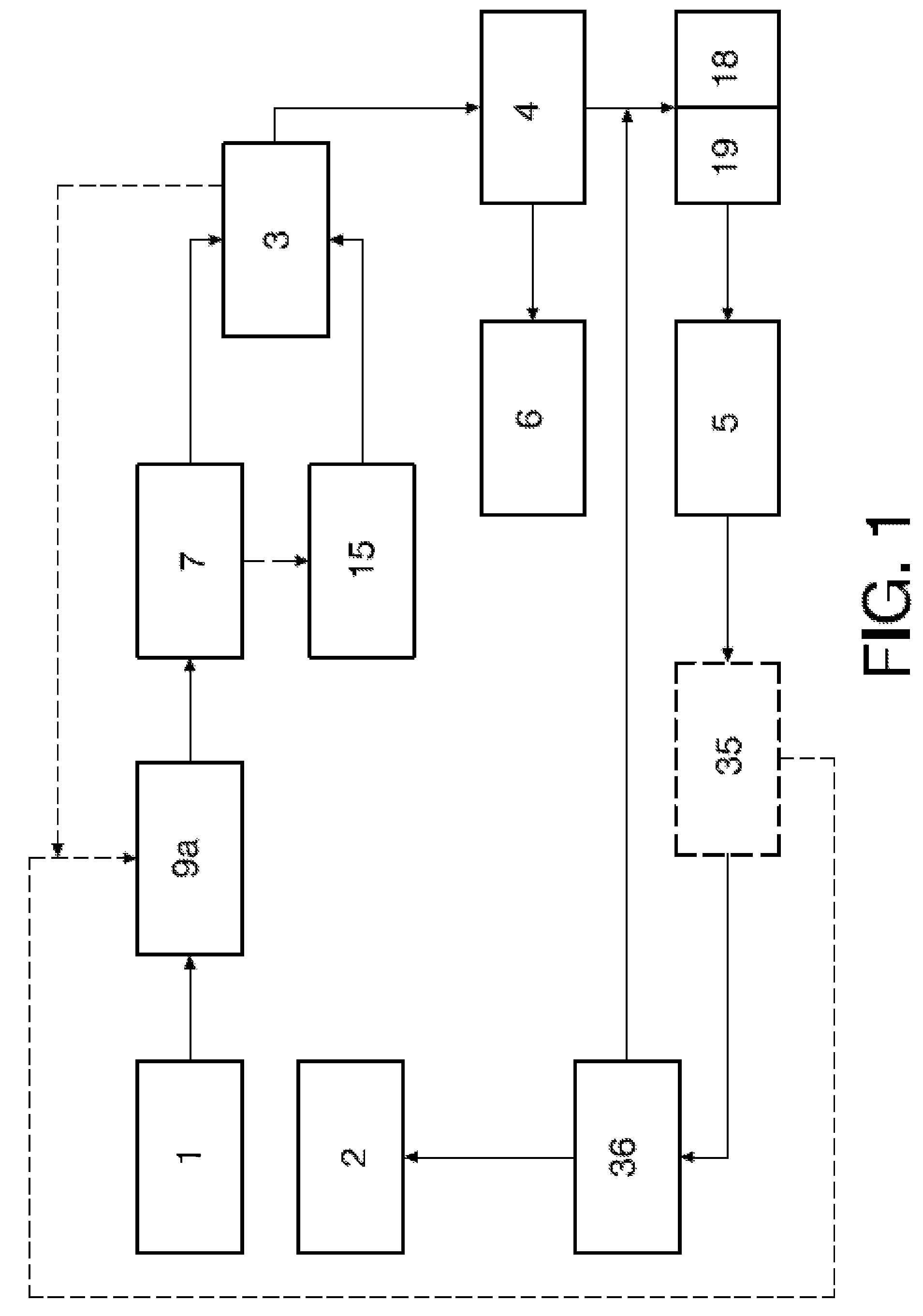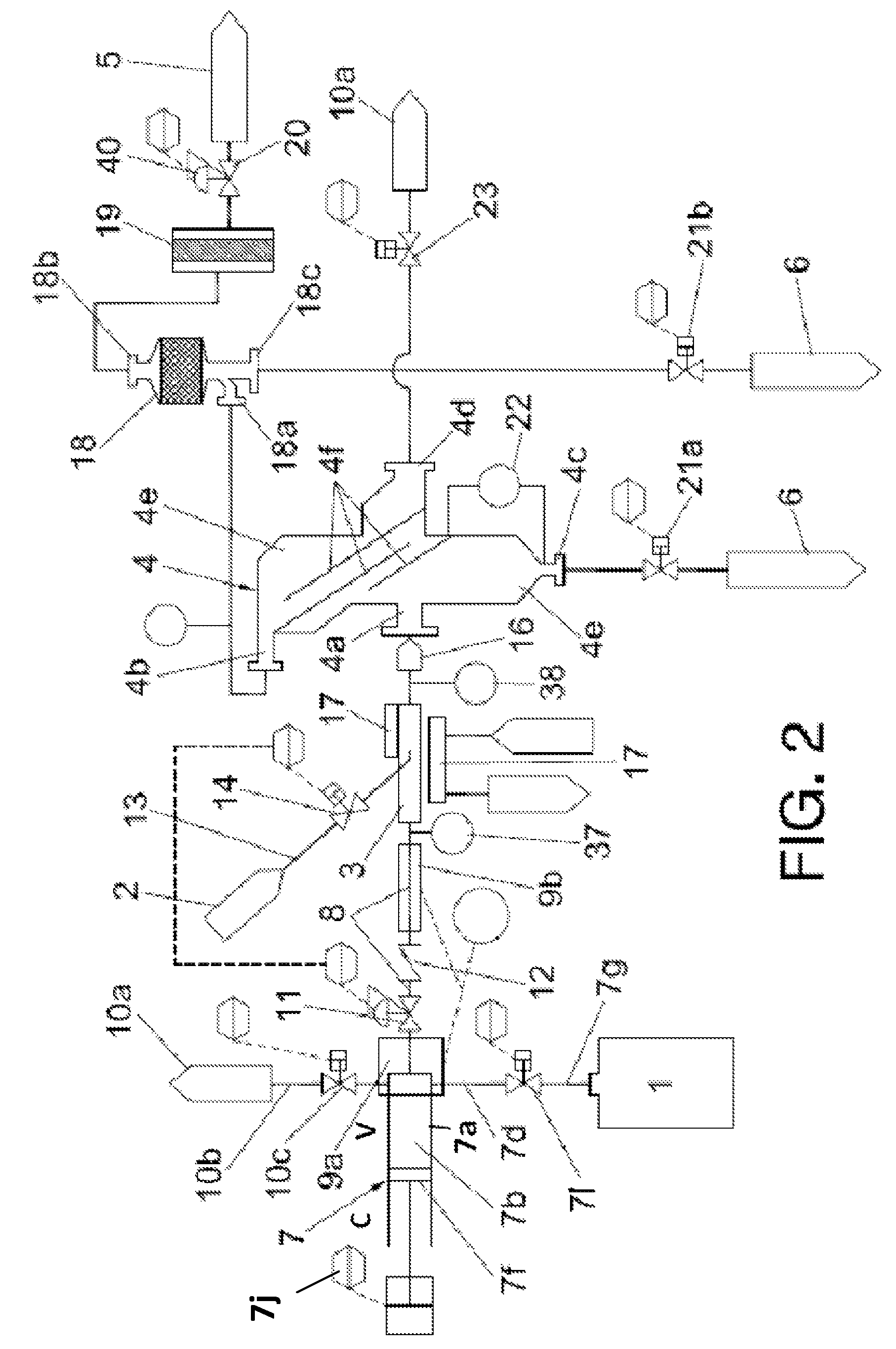System for controlled on demand in situ hydrogen generation using a recyclable liquid metal reagent, and method used in the system
a technology of metal reagent and recycling liquid, which is applied in the field of chemical generation of hydrogen, can solve the problems of difficult control, high cost, and high volume of hydrogen gas, and achieve the effect of improving the level of control over the reaction and the safety and performance of the hydrogen generation process, and being easy to control
- Summary
- Abstract
- Description
- Claims
- Application Information
AI Technical Summary
Benefits of technology
Problems solved by technology
Method used
Image
Examples
Embodiment Construction
[0082]FIGS. 1 to 3 show the basic steps and elements of hydrogen generation in accordance with an embodiment of the invention.
[0083]The basic steps of this embodiment are shown in FIG. 1 and will be explained on the basis of an alkali metal such as lithium or sodium being used as the first reagent although these steps can also be followed analogously using alkaline earth metal, or alloys of these metals.
[0084]Alkali metal contained in the first storage means -1- is heated by first reagent heating means -9a- to a temperature above its melting point, and the so liquefied alkali metal is injected by extrusion, preferably using a controlled dimension extruder die head, into the reactor -3- by means of the metal reagent injecting device -7-. Simultaneously, demineralized cool liquid water coming from the second storage means -2- is also injected into the reactor -3- by water-injection means -15-. The water-injecting means -15- is controlled such that it provides a water flow that is at a...
PUM
| Property | Measurement | Unit |
|---|---|---|
| melting point | aaaaa | aaaaa |
| temperature | aaaaa | aaaaa |
| temperature | aaaaa | aaaaa |
Abstract
Description
Claims
Application Information
 Login to View More
Login to View More - R&D
- Intellectual Property
- Life Sciences
- Materials
- Tech Scout
- Unparalleled Data Quality
- Higher Quality Content
- 60% Fewer Hallucinations
Browse by: Latest US Patents, China's latest patents, Technical Efficacy Thesaurus, Application Domain, Technology Topic, Popular Technical Reports.
© 2025 PatSnap. All rights reserved.Legal|Privacy policy|Modern Slavery Act Transparency Statement|Sitemap|About US| Contact US: help@patsnap.com



